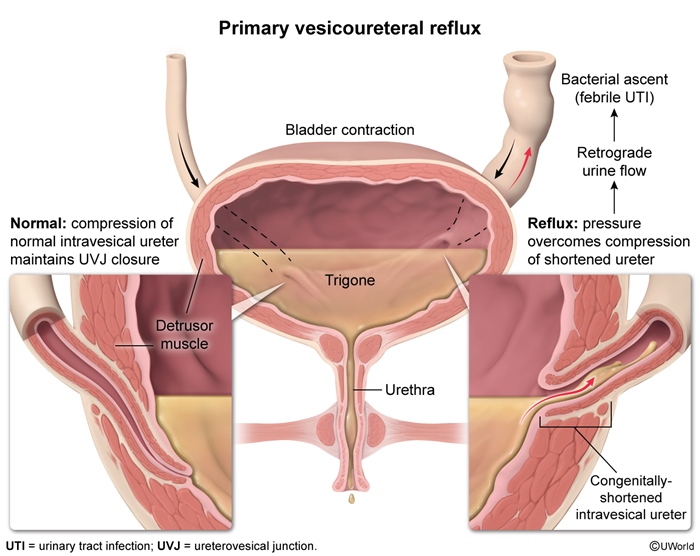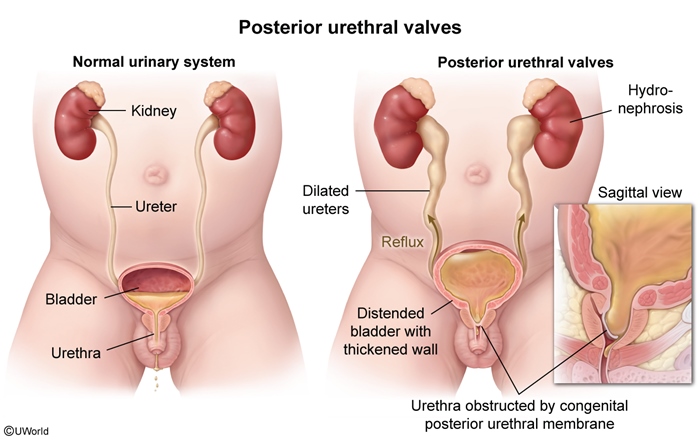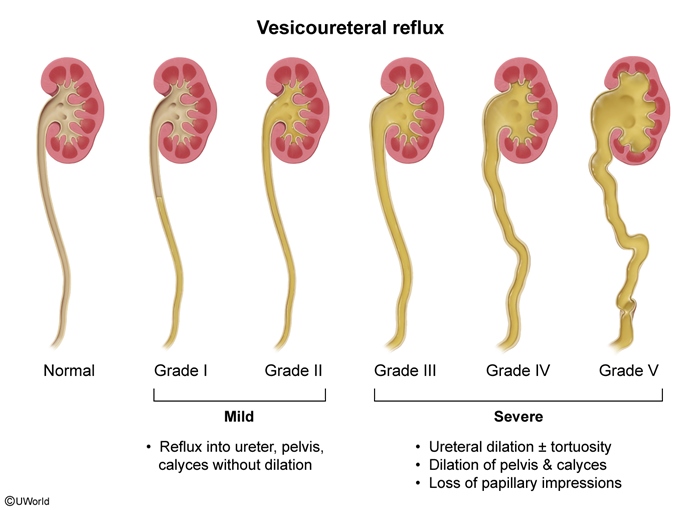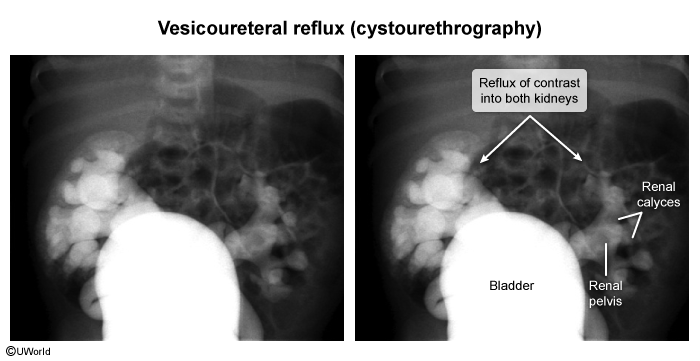Vesicoureteral Reflux
Article Sections
Introduction
Vesicoureteral reflux (VUR) is the retrograde flow of urine from the bladder into the upper urinary tract. VUR is the most common pediatric urologic condition and is associated with an increased risk for pyelonephritis and structural damage (eg, ureteral dilation, fibrosis) if untreated.
Pathogenesis and risk factors
Urine flows from the ureters into the bladder through the ureterovesical junction (UVJ). The ureters enter the bladder wall at an oblique angle. During micturition, the detrusor muscle contracts to increase pressure within the bladder. As the detrusor muscle contracts, it compresses the segment of the ureter that passes through the bladder wall (intravesical ureter), sealing the UVJ and preventing retrograde urine flow. Therefore, VUR occurs when the UVJ is not properly sealed (Figure 1), as follows:
Continue Learning with UWorld
Get the full Vesicoureteral Reflux article plus rich visuals, real-world cases, and in-depth insights from medical experts, all available through the UWorld Medical Library.
Figures



Images
